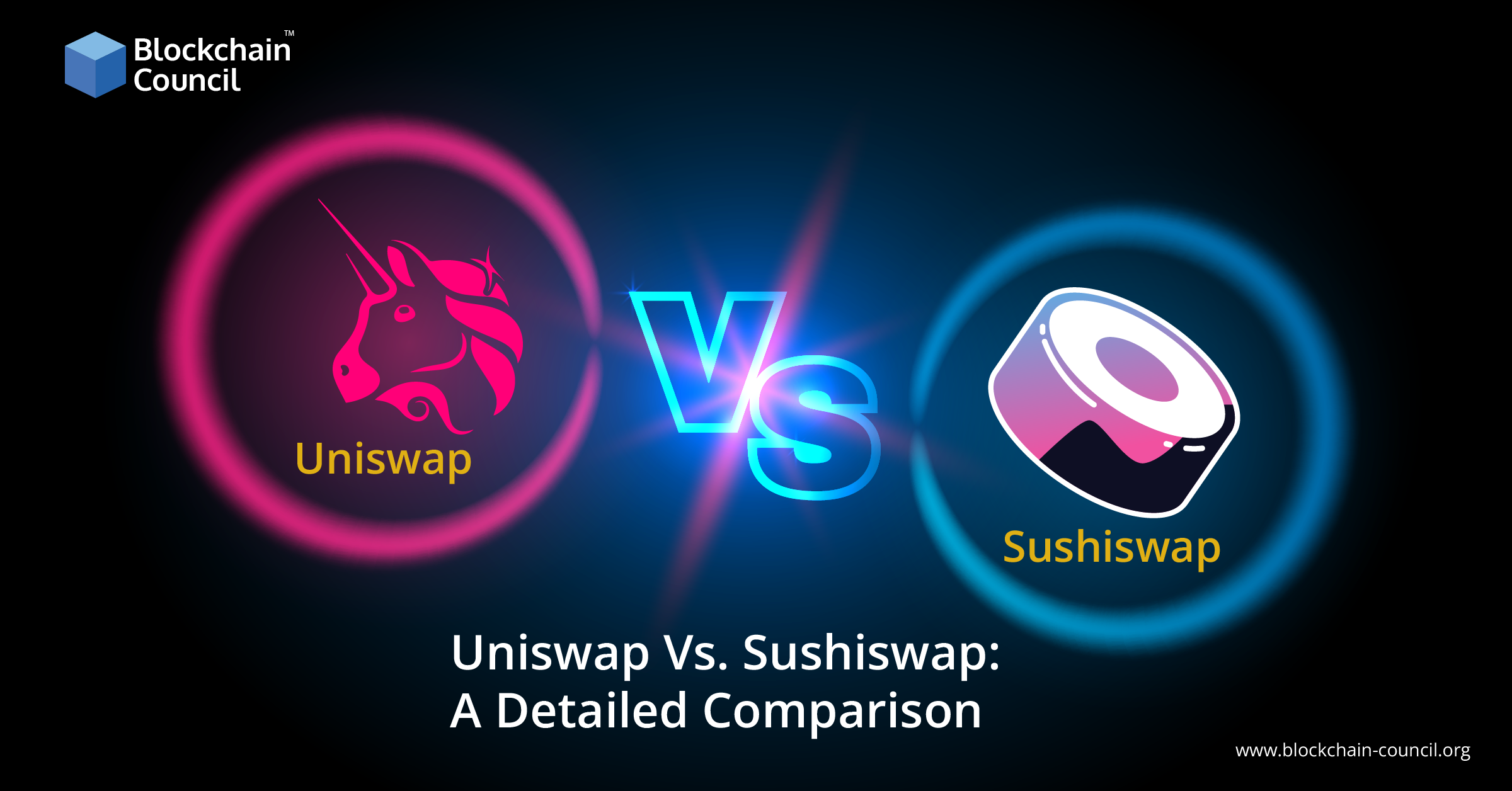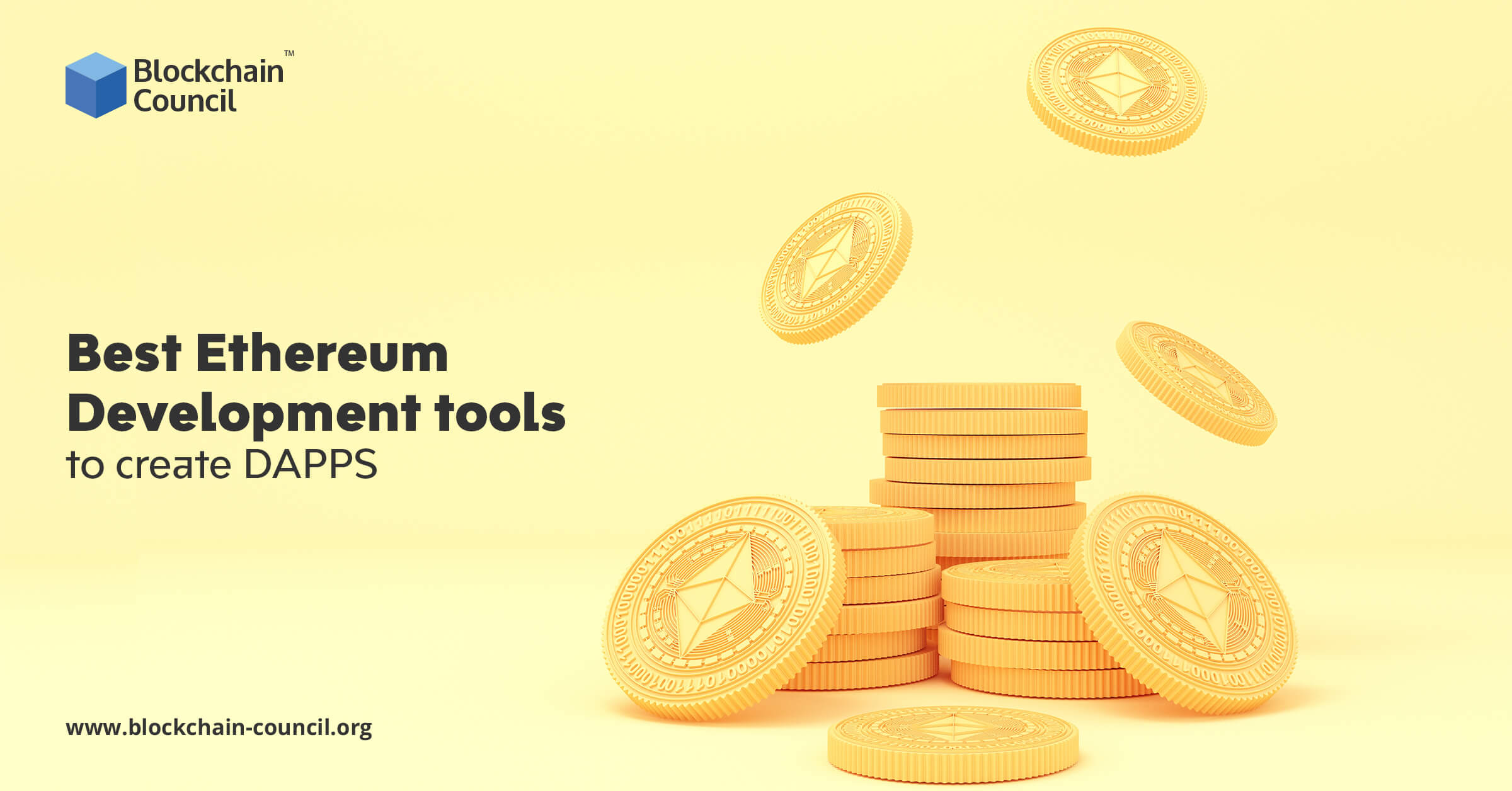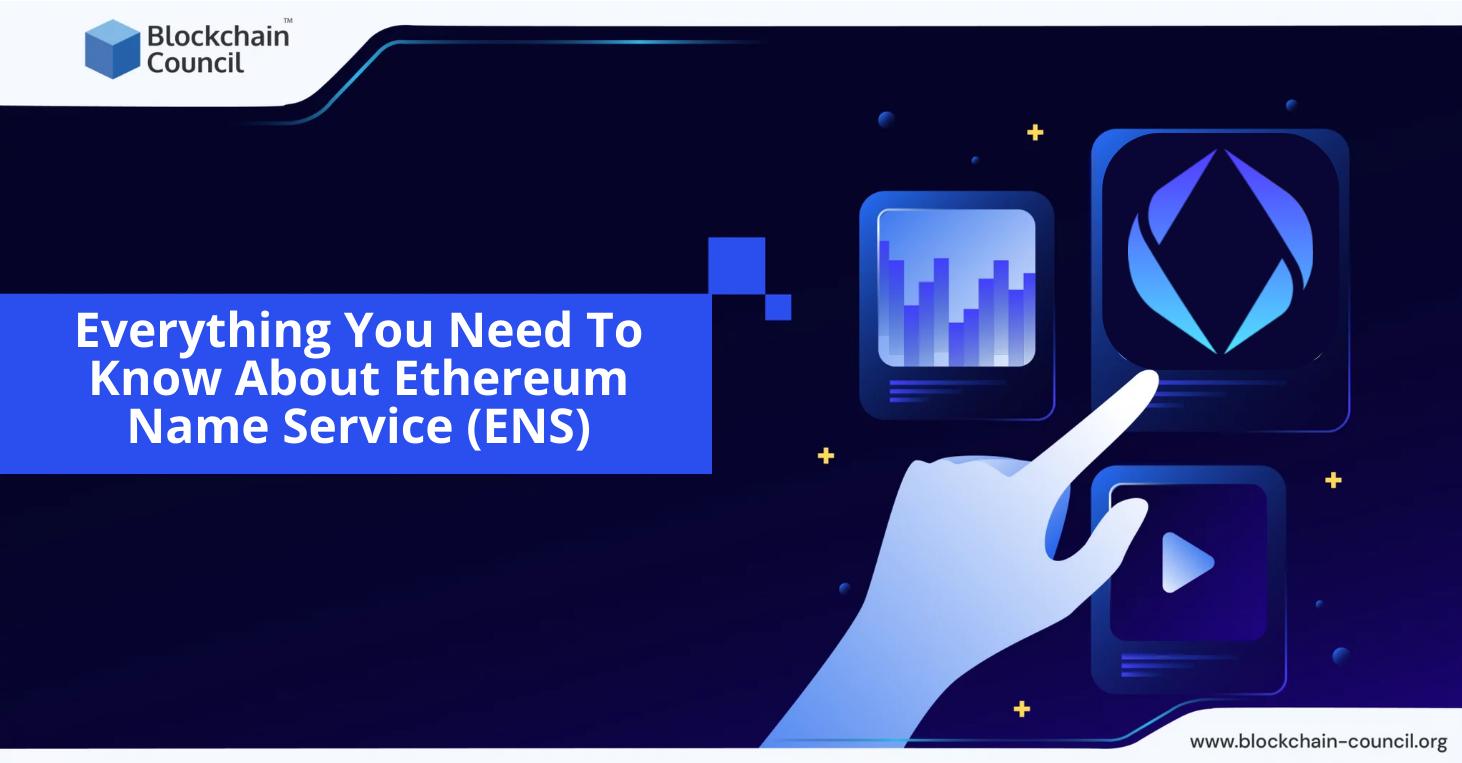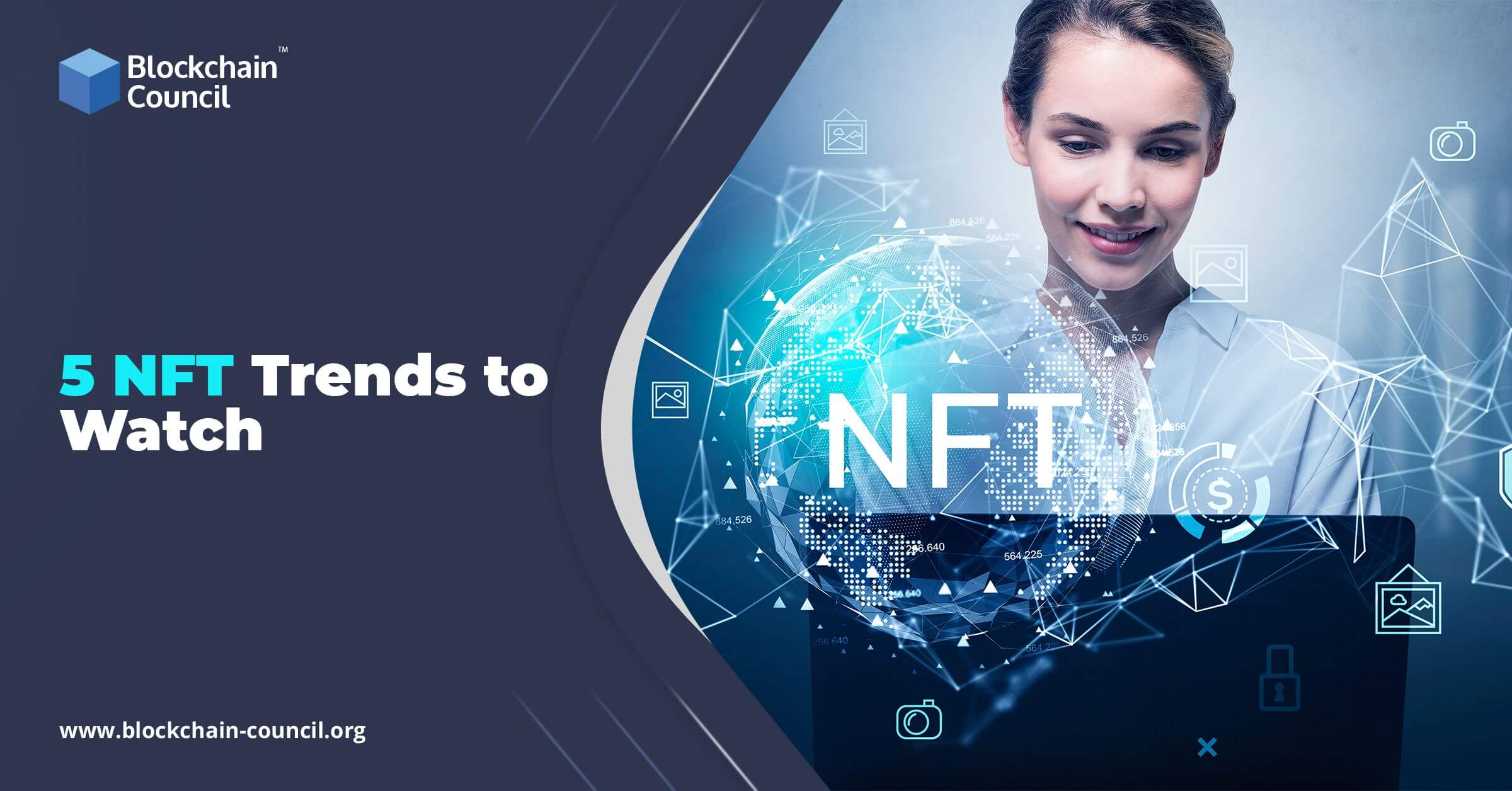
- Ayushi Abrol
- June 07, 2024
When it comes to Decentralized Exchanges (DEXs) built on the Ethereum (ETH) blockchain, Uniswap (UNI) and SushiSwap (SUSHI) are two major contenders. They are the two main DEXs within the Decentralized Finance (DeFi) space. DEXs enable users to exchange their assets without substituting the detention of their assets to other parties, thereby preventing the security problems of centralized trades. In addition, DEXs empower better privacy due to the scarcity of Know Your Customer (KYC) confirmation.
Let’s explore Uniswap vs. SushiSwap in this detailed comparison and start understanding what’s unique about them.
What is Uniswap?
Uniswap is a leading decentralized crypto exchange in the crypto realm that operates on the Ethereum blockchain. Uniswap works for the public good, unlike most exchanges intended to charge trading fees. This is an excellent tool for members to easily exchange tokens without paying any platform fees or dealing with negotiators.
The Ethereum blockchain was employed to construct the Uniswap medium in 2018. This has become the world’s second-largest cryptocurrency project by market capitalization. They are making it compatible with all ERC-20 tokens and wallet services like MetaMask and MyEtherWallet. Uniswap is also completely open-source, meaning anyone can copy the code to create their decentralized exchange. This allows users to list free tokens on the exchange. Regular centralized exchanges are profit-driven and charge a hefty fee to trade in a list of new coins, so this is a significant difference.
Trading in Uniswap Tokens (UNI) allows crypto-holders to participate in the governance of this finance protocol as they enter to explore the place of decentralized finance. Ethereum uses blockchain for financial transactions, independent of central financial intermediaries, such as exchanges or centralized online wallets.
How does Uniswap Work?
Uniswap does not attach to the traditional engineering of advanced trading and operates without an order book. It utilizes the constant product, market maker. This approach is a variant of the AMM ( Automated Market Maker prototype). AMMs are smart contracts that hold liquidity pools or reserves that dealers can exchange in trades. These pools are subsidized by LPs (Liquidity Providers).
Anyone who lends the same amount of two tokens in the pool is eligible to become a liquidity provider. As a result, the merchant pool has to pay some taxes. This tax is then passed to liquidity providers depending on their pool share. These tokens can be either two ERC-20 or one ETH token. This pool usually consists of stable coins such as USDC, DAI, or USDT. LPs can reclaim this liquidity token based on their contribution to the pool. LPs can reclaim this liquidity token based on their contribution to the pool.
What makes Uniswap Special?
Uniswap, an open source, decentralized platform (DEX) has emerged as the fourth largest Decentralized Finance (DeFi) platform by solving this issue of liquidity.
Uniswap solves the problem of liquidity by employing the automated liquidity protocol, which incentivizes traders to become Liquidity Providers (LP) in exchange for tokens that represent their contributions. These LPs pool their money to create a fund which can be used to execute all trades that occur on the platform. Due to the existence of the consolidated fund, users don’t have to wait to find a buyer to sell. The value of the token is determined mathematically and can be exchanged for money from the trading fees fund. Considering the fact that Uniswap charges 0.30% as trading fees per transaction, which is then sent to the liquidity reserve, it is a win-win situation for both the LPs as well as the rest of the users of Uniswap.
Uniswap has a smoother exchange experience than Sushiswap.
What are the advantages of Uniswap?
Uniswap is well-known due to the numerous features that appeal to consumers all over the world. Take a look at them:
Low Transaction Fee:
Uniswap only charges 0.30% per transaction. It is much more affordable than most decentralized exchanges. Have they mentioned that it can be reduced to 0.25% in the future?
Does not mandate KYC (Identity Check):
They do not require the KYC process. This entitles you to trade on the exchange quickly, and the data will not slip into the wrong hands if the exchange is hacked.
Self-management of assets:
You have complete control over your money. This avoids the risks associated with decentralized exchanges, where you can lose money if the exchange goes bankrupt or is hacked.
Opportunities to Access New Coins/Tokens:
You often encounter this in centralized exchanges: Few crypto schemes will have to go through a moderation procedure with the listed coin/token exchange.
What is Sushiswap?
Sushi is the original token of Sushi Swap. This is an ERC-20 token distributed to liquidity providers on Sushi Swap through Liquidity Mining. The maximum amount for SUSHI tokens is 250 million. The block rate determines sushi supply. It will be rendered at the rate of 100 tokens per block by November 2021, and its ongoing supply has already achieved around 50% of the entire supply of 127 million tokens.
How Does Sushi Swap Work?
Like Uniswap, Sushi Swap is built on an Automated Market Maker (AMM) system that uses the smart contracts mentioned above to complete transactions. Other users provide tokens through the liquidity pool. Other Sushi Swap users lock their funds into this pool in token pairs, which provide the funds needed to complete the swap. Those users are then awarded by a process called income farming – a little percentage of the payments generated by the trade.
Beyond Token Swaps, Sushi Swap offers other Defi features, such as the ability to add SUSHI coins and rewards to the network and take part in credit services and buy newly-offered Token Defi startups through its MISO service.
What’s Special About Sushi swap?
Although it started with Uniswap’s codebase, Sushi Swap has made significant changes to differentiate it from its inspiration. The SUSHI token was a different innovation that eventually led to Uniswap adopting a similar approach, giving users additional tools to generate rewards and the future of DEX.
Unlike Uniswap which has raised venture capital funding and is a core, centralized development team, Sushi Swap is a decentralized community focused on practices that go beyond DEX.
What are the advantages of SushiSwap?
SushiSwap is a hard fork of Uniswap, with community-focused features while keeping the original design of its parent. Unfortunately, instead of turning its path, the protocol is meant to milk its parent’s liquidity.
On its first day of existence, it took $250 million worth of fish from Uniswap. Three days later, it acquired nearly 80 percent liquidity.
The ecosystem working is split into two stages; The first stage involves traders carrying liquidity pool tokens from Uniswap and accepting SUSHI in return. Afterward, traders transfer the stake tokens and use them on the SushiSwap Decentralized Exchange (DEX).
More incentives for liquidity providers
On Uniswap, liquidity providers earn from trading fees generated on the network. Smaller liquidity providers are at risk of being eclipsed by massive cryptocurrency exchanges, mining pools, and other wealthy providers.
But, its spinoff makes it better by providing more incentives. Here, the liquidity providers are awarded by SUSHI tokens. Providers gain a portion of the fees generated by the trade even after they provide liquidity.
An elaborate reward system
The original chain and fork distribute the same trading fees but differ in their distribution mechanism. On Uniswap, 0.3 percent of a pool’s liquidity is shared equally among providers.
Sushi was, on the other hand, distributed 0.25 percent of the pool’s trading fees to liquidity providers in a ratio. An additional 0.05 percent is converted into SUSHI and spread to token holders.
Approval for security audits
Although the scheme is new, it appears to do multiple things worth noting. For example, it provides security audits and recommendations to retain 10 percent of each token distribution for continued development.
Uniswap VS Sushiswap: A Detailed Comparison
Does the Uniswap & SushiSwap name sound familiar? That’s a result of the two protocols supporting identical code. SushiSwap is simply a fork of the Uniswap exchange with a couple of modifications created to the code.
Over time, each platform began introducing new options and concepts. Currently, the variations between Uniswap and SushiSwap include:
Swap fees
Uniswap comes up with three fee tiers that are 0.05%, 0.3%, and 1%. The fee tiers represent the chance that liquidity suppliers are willing to require in keeping with the expected volatility of their pools. For example, stablecoin pairs could charge a 0.05% fee, common pairs such as ETH/USDT may accept 0.3%, and pairs with newer tokens may charge a 1% fee. The Uniswap protocol divides the expenses proportionately among all existing liquidity providers. On the other hand, SushiSwap charges a flat 0.3 % fee for all business teams, dish token holders obtain 0.05%, and liquidity providers get 0.25%.
Liquidity Mining
As discussed earlier, Uniswap once distributed some of its UNI tokens through liquidity mining as incentives for liquidity suppliers. The liquidity mining program was transient, and therefore the platform interrupted the program someday when launched as planned. Then the Uniswap grants program, users had no other thanks to earning new UNI tokens since this first token distribution. Hayden Adams, the Uniswap creator, declared that liquidity mining would come back to the platform before long, but Uniswap has to convey a political candidate date. On the other hand, SushiSwap’s liquidity mining continues to be online. Liquidity providers earn dish governance tokens unendingly by staking them in pools to produce liquidity.
Concentrated liquidity
Uniswap introduced a theory known as “concentrated liquidity,” where liquidity suppliers will concentrate their tokens inside custom value ranges. As a result, liquidity providers provide more significant liquidity at a particular price range, thereby forming personalized price curves. The enormous liquidity at a selected commercialism pair’s expected price range permits users to create larger swaps. SushiSwap doesn’t have this feature and has not declared any plans to include this idea into its platform.
Lending and margin trading
Uniswap concentrates completely on its position as a DEX by presenting options, particularly to DEXs. On the contrary, SushiSwap is expanding into other sectors of Defi. The platform presents “BentoBox,” a token locker for decentralized applications (DApps). The BentoBox presently has just one DApp referred to as Kashi, a lending and margin mercantilism platform. Once users deposit tokens into the vault, the BentoBox holds the tokens like a pocketbook, whereas Kashi uses the tokens for margin trading, lending, and borrowing.
Reward system for latest tokens
Uniswap does not furnish any extra rewards to the latest tokens launched on its platform. In contrast, SushiSwap has a characteristic known as the “Onsen Program, ” a liquidity provision network for new tokens. The platform helps more recent and smaller projects through the Onsen system by offering additional SUSHI rewards to speakers of these newer tokens. The extra rewards boost users to attain such tokens for staking objectives, thereby stimulating project growth.
UniSwap Vs SushiSwap: A Detailed Comparison Table
| Features | Uniswap | SushiSwap |
| Swap Fees | It offers a 3-tier fee system with distinct fees according to the risk taken by liquidity suppliers. | SushiSwap charges a flat 0.3 % fee for all business teams. Further, out of 0.3%, dish token holders obtain 0.05%, and liquidity providers get 0.25%. |
| Liquidity Mining | Uniswap once distributed some of its UNI tokens through liquidity mining as incentives for liquidity suppliers. | SushiSwap’s liquidity mining continues to be online. Liquidity providers earn governance tokens unendingly by staking their tokens in pools to produce liquidity. |
| Liquidity Concentration | The larger liquidity at a selected commercialism pair’s expected price range permits users to form larger swaps. | SushiSwap doesn’t have this feature and has not declared any plans to include this idea into its platform. |
| Lending and Margin Trading | Uniswap concentrates entirely on its position as a DEX by presenting options regarding DEXs. | The platform presents “BentoBox,” a token locker for Decentralized Applications (DApps). |
| Reward System For Newer Tokens | Uniswap does not offer any extra rewards to new tokens undertaken on its platform. | SushiSwap has a characteristic named “Onsen Program” which is a liquidity provision strategy for new tokens. |
Conclusion
As DeFi ripples through the crypto space, many projects will rise and others will fail. Unfortunately, when anything goes south, the DeFi community participating will bear most of the burden.
Although the cryptocurrency champions for Anonymous, a project run by an anonymous team or individual does not fully gain the trust of its community. However, for Uniswap Vs SushiSwap, the outcome of an independent audit would improve or break the current energy surrounding it.
You can also join our community on Discord, Reddit and Telegram.


































































 Guides
Guides News
News Blockchain
Blockchain Cryptocurrency
& Digital Assets
Cryptocurrency
& Digital Assets Web3
Web3 Metaverse & NFTs
Metaverse & NFTs
